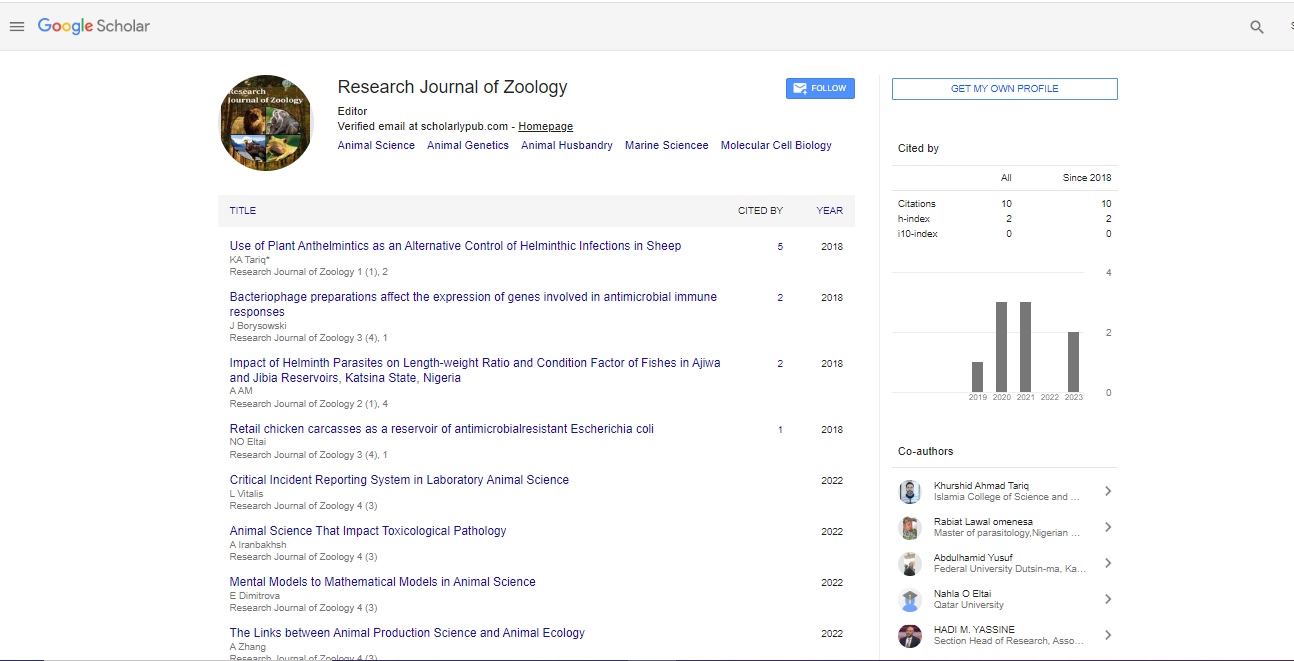Opinion Article, Res J Zool Vol: 5 Issue: 1
Discovery of a New Species of Sea Urchin with Morphological Similarities to Arbacia Lixula (Echinodermata, Echinoidea, Arbaciidae) Inside a Sea Cave on the South-Eastern Coast of Central Greece
Taklis Christos*
1Department of Conservation Biology, London School of Science and Management, London, United Kingdom
*Corresponding Author: Taklis Christos
Department of Conservation Biology,
London School of Science and Management, London, United Kingdom
E-mail: ctaklis@gmail.com
Received date: 26-Mar-2023, Manuscript No. RJZ-23-92924;
Editor assigned date: 28-Mar-2023, PreQC No. RJZ-23-92924(PQ);
Reviewed date: 11-Apr-2023, QC No. RJZ-23-92924;
Revised date: 19-Apr-2023, Manuscript No. RJZ-23-92924(R);
Published date: 28-Apr-2023 DOI: 10.4172/Rjz.1000071.
Citation: Christos T (2023) Discovery of a New Species of Sea Urchin with Morphological Similarities to Arbacia lixula (Echinodermata, Echinoidea, Arbaciidae) Inside a Sea Cave on the South-Eastern Coast of Central Greece. Res J Zool 5:1.
Description
A new species of sea urchin with similarities to Arbacia lixula has been discovered in a sea cave at the remote beach of “Radakia” on the eastern coast of central Greece. The specimen has been recorded inside a huge sea cave (39°08'23.8"N 23°17'54.0"E) at depth of 1 meter with pebbles substrate. The new species scientific name is suggested as Arbacia cavernicola. Echinoderms are species that can be found worldwide. Through an exploration of a sea cave on 26th August 2019, new species of sea urchin discovered, belonging to the family Arbaciidae and the genus Arbacia (Figure 1). Five sea urchins of this species have observed and photo recorded two of them for their morphological characteristics. But no other species of sea urchin found inside the cave [1].
The sea cave (39°08'23.8"N 23°17'54.0"E) has only one entrance by the sea, it has pebbles substrate and it is on the beach “Radakia” of the region of South Pelion, Greece.
The specimen was not harmed in any way and it was just recorded and photographed. After the observation of the specimen and because of its uniqueness was left behind where it was taken, the size of this specimen was about 8 cm.
Based on the observation of the habitat the depth in most parts of the cave was not more than 1 meter deep. The cave was shaping the letter “U”, with two pebble beaches to exist inside the cave.
This sea urchin species color is green, it has a round shape, with pentagon-shaped plates that cover the body, two plates on each row, and each plate column is separated from the other by a stripe of gonads (Figure 2).
The spines are on the edge of the gonads, they have a dark green base (ball joints) and the spines are brownish with purple tips.
The anal plates are four in number and all of them are creating a round shape with it’s in the center is the anus. The genital plate has five plates in number as the ocular plates, with yellow gonopores on the genital plates. The genital plates with the ocular plates are creating a flower shape like petals.
This species has a white sea-star shape on the bottom side covered with tube feet and the mouth to be the center (Figure 3). The tube feet are white and greenish color (Figure 4).
On the contrary, A. lixula has three or four anal plates, the genital plates look like petals of a flower and they have black spot gonopores. Their spines are brownish with white purplish tips as for the mouth is surrounded by tube feet and their color are black [2].
Conclusion
The species has some taxonomic and morphological similarities of Arbacia lixula, but a lot of different morphological similarities than other Echinoderm sp. and throughout a deep research none of the existing known species of sea urchin is close enough to describe it as a variation.
By recording A. lixula in different depths and different habitats for researching their morphological characteristics, the conclusion is clear.
As it seems this species is new and undiscovered before, which has the characteristics of Arbacia sp., and because it was found in a cave, the logical binomial nomenclature and suggestion is Arbacia cavernicola, which will belong under the genus Arbacia.
References
- Linnaeus CV (1758) Systema naturae
- Kroh A (2011) Echinothurioida World Echinoidea Database.
 Spanish
Spanish  Chinese
Chinese  Russian
Russian  German
German  French
French  Japanese
Japanese  Portuguese
Portuguese  Hindi
Hindi 




